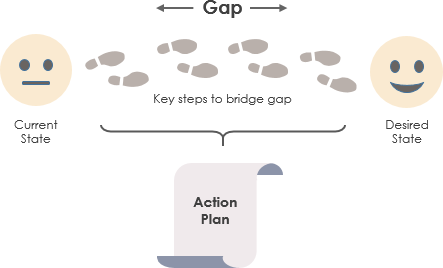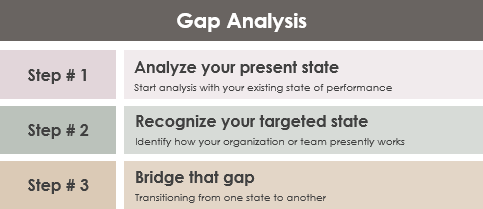Business process reengineering (also known as business process redesign, business transformation, or business process change management) is originally pioneered in the early 1990s, focusing on the analysis and design of workflows and business processes within an organization. BPR involves discovering how business processes currently operate, how to redesign these processes to eliminate the wasted or redundant effort and improve efficiency, and how to implement the process changes to gain competitiveness.
Business models are developed as defining either the current state of the process, in which case the final product is called the “as is” snapshot model, or a concept of what the process should become, resulting in a “to be” model. By studying the difference between the current and target business state, known as a gap, the business analysts can determine if the existing business processes and information systems are sound and only need minor modifications, or if reengineering is required to correct problems or improve efficiency. Consequently, business process modeling and subsequent analysis can be used to fundamentally reshape the way an enterprise conducts its operations.

The As-Is process defines the current state of a business process in any given organization or structure. Generally speaking, the goal of analyzing the current state of a process is to find out which components could be improved. It is important to bear in mind that this As-Is analysis will only show you what can be improved, but not necessarily how. Mapping the As-Is process will only reveal how your business processes are working today.
Typically, a To-Be process is defined as the desired (or target) state of an organizational or business process. It is the ideal state of how you want your business processes to work, and mapping the To-Be processes will structurally clarify how you can get there. Thus, you will be able to see what changes are necessary for your business processes to reach their desired state.
A Gap Analysis can help an organization to understand where they want to be, the gap between where there are now and where they want to be, and hence, what steps (action plan) should be taken to close the gap.
Thus, to get from our current state to our desired state there will be several key steps we need to take to bridge the gap. From this, we will create an action plan outlining the exact actions we’ll take to achieve each step so we eventually close the gap.

Once you have identified the existing gaps, evaluate how they are keeping you from achieving your goals. Plan out how you are going to surpass the difficulties. Set clear objectives. This will enable you to actualize your transition. Here’s the Gap Analysis process:
The as-is state of a process is the current state. It’s how the process operates before you make any changes or improvements. The to-be process, on the other hand, is the future state. After an analysis team builds the AS-IS model using techniques such as Business Process Model and Notation (BPMN). As-Is BPD diagram describes the present state of the organization’s process, culture, and capabilities. The To-Be diagram describes the future state; in other words, how the organization’s process, culture, and capabilities will appear in the future. This studying of the As-is and To-be process results in identifying the difference between the current and target business state, known as a gap, which is an important part of any business process reengineering/improvement initiative.